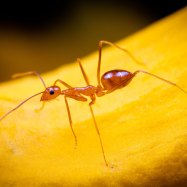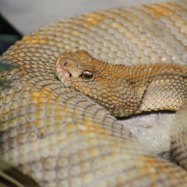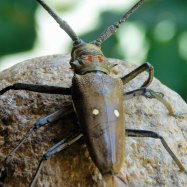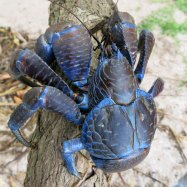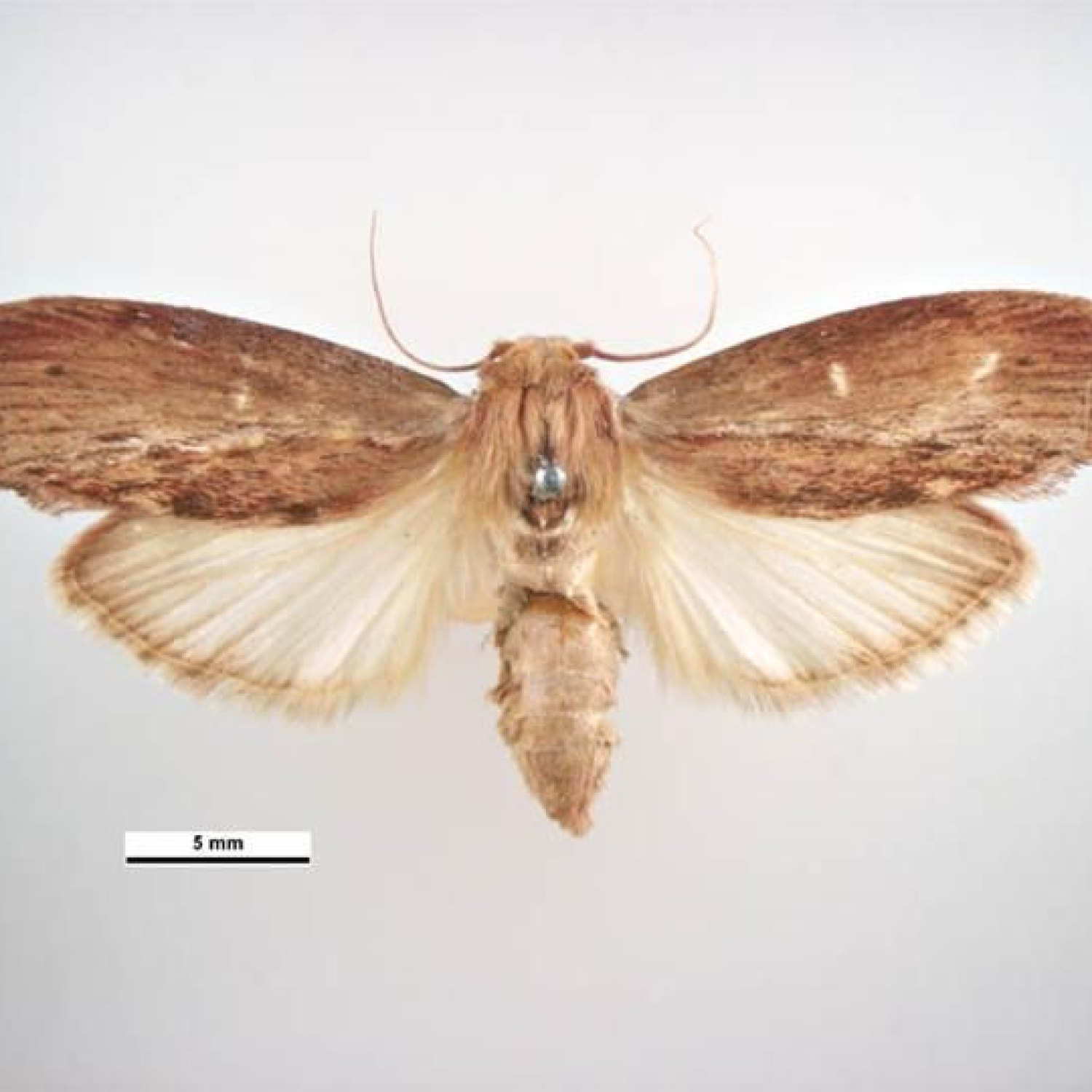
Wax Moth
The adult Wax Moth has a body length of about 1 centimeter, with a wingspan of about 2 centimeters. The larvae can reach a length of up to 2 centimeters.
Did you know that Wax Moths can be found in beehives and other locations with bee colonies? These pests have a wingspan of 2 cm and can reach a length of 2 cm as larvae. Keep your beehives safe by regularly inspecting and removing any Wax Moth infestations. #WaxMoth #Beekeeping
Animal Details Summary:
Common Name: Wax Moth
Kingdom: Animalia
Habitat: Wax Moths are found worldwide and are commonly associated with bee colonies. They can be found in beehives and other areas where bees are present.
The Intriguing World of the Wax Moth
From its humble beginnings as a small egg to its transformation into a winged adult, the Wax Moth (Galleria mellonella) has a fascinating life cycle that has captured the interest of entomologists and curious individuals alike. This unassuming insect, commonly known as the Wax Moth, has a wide distribution and can be found in numerous habitats across the globe.The Wax Moth belongs to the class Insecta and is part of the family Pyralidae, a diverse group of moths known for their colorful patterns and wing shapes. This particular species, Galleria mellonella, is also referred to as the Greater Wax Moth or Honeycomb Moth Wax Moth.
This insect is found in a variety of habitats, but its close association with bee colonies has earned it the name "Wax Moth." Let's take a closer look at this extraordinary insect and discover the unique features that make it stand out in the world of insects.
A Global Distribution
The Wax Moth's habitat is worldwide, and it is found in various regions throughout the world. This species is commonly found in North America, Europe, and Asia, but it has also been spotted in other countries, including Australia, New Zealand, and Africa.Despite being found in different parts of the world, the Wax Moth does not have a specific country of origin. Instead, it has spread to different regions over time, most likely through the transport of bee colonies, their primary source of food.
Habitat and Feeding Habits
The Wax Moth's habitat is closely tied to bee colonies. These insects are commonly found in beehives, honey storage facilities, and other areas where bees are present. They are attracted to the scent of beeswax and honey, which is their primary source of food Welsh Terrier.The larvae of the Wax Moth, also known as waxworms, have a voracious appetite and feed on beeswax, pollen, and honey. They are unable to digest beeswax alone and rely on certain bacteria in their gut to break down this substance for them. This symbiotic relationship allows the larvae to thrive on beeswax, making them a nuisance to beekeepers.
The larvae of the Wax Moth can cause significant damage to bee colonies by feeding on the beeswax and honey, which weakens the hive and makes it susceptible to diseases and other pests. Infestations of Wax Moths can ultimately lead to the collapse of entire bee colonies, making them a threat to the beekeeping industry.
A Closer Look at the Anatomy of a Wax Moth
The Wax Moth has a unique appearance that sets it apart from other insects. Its scientific name, Galleria mellonella, is derived from the Latin words "galea," meaning "helmet," and "mellis," meaning "honey." This name is a nod to its close association with bees and honey.Size and Coloration
The adult Wax Moth has a relatively small body, measuring only about 1 centimeter in length. It has a wingspan of approximately 2 centimeters, making it a relatively small insect compared to others in the moth family. The adult Wax Moth has a grayish-brown color, with darker spots on its wings, giving it a mottled appearance.
In contrast, the larvae of the Wax Moth have a creamy white or pinkish color and are slightly larger than the adults, measuring up to 2 centimeters in length.
Body Shape and Structure
The adult Wax Moth has a slender, cylindrical body with a pair of small, scaled wings. The wings are responsible for propelling the moth through the air in a fluttery motion. The moth's wings are essential for dispersing pheromones, which are chemical substances that attract mates, and for escaping predators.
The larvae of the Wax Moth have a grub-like appearance, with soft, pale bodies and small legs. They are well-adapted for life in the hive, as their cylindrical bodies allow them to wriggle their way between honeycomb cells in search of food.
The Life Cycle of a Wax Moth
Like most insects, the Wax Moth has a complex life cycle that consists of four stages: egg, larva, pupa, and adult. Let's take a closer look at each of these stages.Egg: From Laid to Hatched
The female Wax Moth lays her eggs in cracks and crevices near beehives, where they are hidden from predators. These eggs are tiny, measuring only about 1 millimeter in length, and are covered in a sticky substance that allows them to adhere to surfaces.
After about a week, the eggs hatch into larvae, which begin their journey to adulthood.
Larva: The Grub Stage
The larvae of the Wax Moth are known as waxworms and are voracious eaters. They spend most of their time feeding on beeswax, pollen, and honey, and they can consume up to 20 times their body weight in a single day.
As they grow, the larvae go through several molting stages, shedding their skin to accommodate their increasing size. They also change color, transitioning from a pale creamy white to a pinkish hue as they near the end of their larval stage.
Pupa: The Transformation
After about five to six weeks of feeding, the larvae enter the pupal stage, where they spin a cocoon using silk and debris from their surroundings. Inside the cocoon, the larvae undergo a transformation, eventually emerging as adults.
Adult: The Final Stage
The adult Wax Moth has a relatively short lifespan of only a few weeks, during which they mate and lay eggs to start the cycle all over again.
Wax Moths and Beekeeping
The Wax Moth is often seen as a pest by beekeepers, as their larvae can cause significant damage to bee colonies. However, these insects may also have a positive impact on beehives.Wax Moths as Indicators of Weak Bee Colonies
Bees have a natural defense mechanism against Wax Moths, where they form a tight cluster around any larvae or cocoons found in the hive and raise the temperature to over 100 degrees Fahrenheit, suffocating the pests. If Wax Moths manage to invade a bee colony and survive, it could be an indicator that the colony is weak and may require attention from the beekeeper.
Wax Moth Larvae as Sustainable Protein Source
In some parts of the world, the larvae of Wax Moths are considered a delicacy and are even eaten as a source of protein. Some researchers have also suggested that these larvae could be a sustainable protein source for humans, as they have a high nutrient content and require minimal resources to rear.
The Importance of Wax Moths in Nature
While Wax Moths may be seen as pests by beekeepers, they play an essential role in nature. These insects are necessary for breaking down beeswax, which is a challenging substance to decompose. Additionally, the larvae of Wax Moths serve as a food source for many predators, including birds and other insects.Moreover, the Wax Moth's close association with bees also highlights the interconnectivity of the natural world. Without the Wax Moth, beeswax and honey would accumulate in beehives, making them unsuitable for bee colonies and other organisms that rely on these resources.
The Fascinating World of the Wax Moth
From its worldwide distribution to its symbiotic relationship with bees, the Wax Moth is an intriguing and essential insect in the world of entomology. Despite their reputation as pests, these insects play a vital role in nature and have captured the interest of scientists and nature enthusiasts alike.Understanding these insects' biology and behavior can help us appreciate their significance and the delicate balance of nature. So the next time you spot a Wax Moth fluttering around a beehive, take a moment to appreciate this small but mighty creature and its role in the intricate web of life.

Wax Moth
Animal Details Wax Moth - Scientific Name: Galleria mellonella
- Category: Animals W
- Scientific Name: Galleria mellonella
- Common Name: Wax Moth
- Kingdom: Animalia
- Phylum: Arthropoda
- Class: Insecta
- Order: Lepidoptera
- Family: Pyralidae
- Habitat: Wax Moths are found worldwide and are commonly associated with bee colonies. They can be found in beehives and other areas where bees are present.
- Feeding Method: Wax Moth larvae feed on beeswax, pollen, and honey. They can cause damage to beehives by consuming wax and honey, which can weaken the hive and make it vulnerable to diseases and other pests.
- Geographical Distribution: Wax Moths are distributed globally and can be found in various habitats where bee colonies are present. They are commonly found in North America, Europe, and Asia.
- Country of Origin: Wax Moths are not native to any specific country but are found in many regions around the world.
- Location: Wax Moths can be found in areas where bees are present, such as beehives, honey storage facilities, and other locations with bee colonies.
- Animal Coloration: The adult Wax Moth has a grayish-brown color with dark spots on its wings. The larvae are creamy white or pinkish in color.
- Body Shape: The adult Wax Moth has a slender body with a wingspan of about 2 centimeters. The larvae have a grub-like appearance with a soft, cylindrical body.
- Length: The adult Wax Moth has a body length of about 1 centimeter, with a wingspan of about 2 centimeters. The larvae can reach a length of up to 2 centimeters.
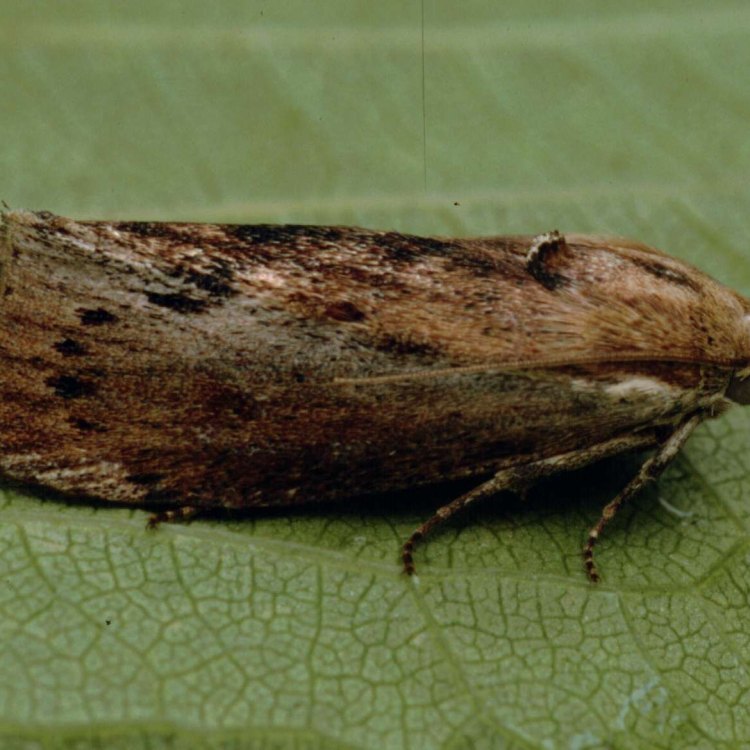
Wax Moth
- Adult Size: The adult Wax Moth has a body length of about 1 centimeter, with a wingspan of about 2 centimeters.
- Average Lifespan: The lifespan of Wax Moths varies depending on environmental conditions and availability of food. The adult moths typically live for about 2-4 weeks.
- Reproduction: Wax Moths undergo complete metamorphosis. The female moths lay their eggs near bee colonies or inside beehives. The eggs hatch into larvae, which feed on wax, pollen, and honey. The larvae then pupate and transform into adult moths.
- Reproductive Behavior: Female Wax Moths release pheromones to attract males for mating. Mating usually occurs near or inside beehives.
- Sound or Call: Wax Moths do not produce any specific sound or call.
- Migration Pattern: Wax Moths do not have a specific migration pattern. They are generally sedentary and stay in the vicinity of bee colonies.
- Social Groups: Wax Moths are not social insects. They do not form social groups or colonies.
- Behavior: Wax Moths are primarily active at night and are attracted to the scent of beeswax and honey. The larvae can cause damage to beehives by consuming wax and honey, which can weaken the hive and make it vulnerable to diseases and other pests.
- Threats: Wax Moths can be a threat to honeybee colonies. The larvae can cause damage to beehives by consuming wax and honey, which can weaken the hive and make it vulnerable to diseases and other pests. Wax Moths are considered pests by beekeepers.
- Conservation Status: Wax Moths are not considered endangered or of any conservation concern.
- Impact on Ecosystem: Wax Moths play a role in the decomposition of beeswax in the environment. They help break down wax and recycle nutrients. However, their presence in large numbers can be detrimental to honeybee colonies.
- Human Use: Wax Moths have no significant direct human use. However, they can serve as a food source for other animals in the ecosystem.
- Distinctive Features: Distinctive features of Wax Moths include their grayish-brown coloration, dark spots on their wings, and the presence of creamy white or pinkish larvae.
- Interesting Facts: 1. Wax Moths are also known as beehive moths because of their association with bee colonies. 2. The larvae of Wax Moths can cause significant damage to beehives if not controlled. 3. Wax Moths are not harmful to humans but can be a nuisance for beekeepers. 4. Wax Moth larvae produce silk threads that they use to construct tunnels and webs inside beehives. 5. The adult Wax Moths are primarily active at night and are attracted to the scent of beeswax and honey.
- Predator: Wax Moth larvae are preyed upon by various predators, including birds, ants, and other insects.
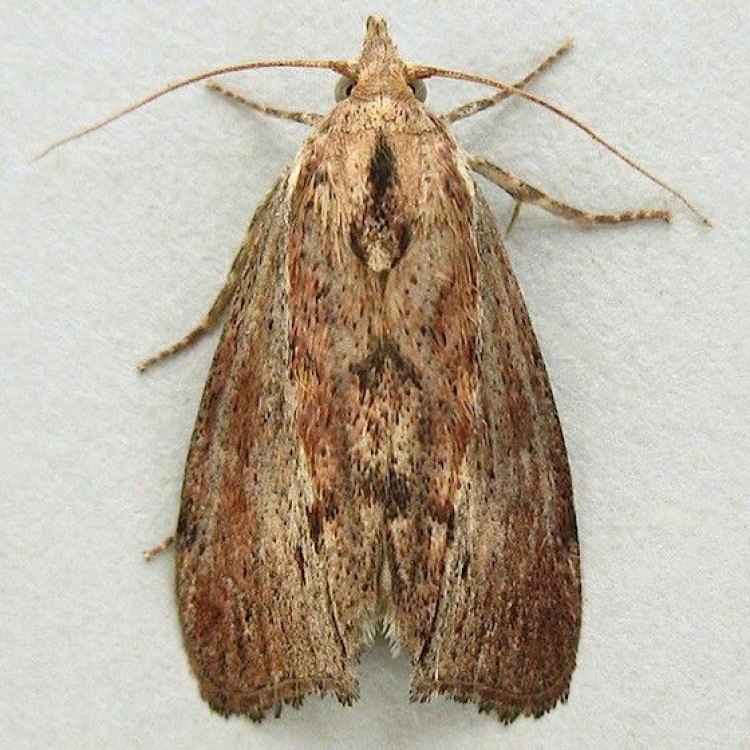
Galleria mellonella
Nature's Tiny Beekeeper: The Intriguing World of Wax Moths
In a world full of larger and more well-known insects, the Wax Moth may not stand out at first glance. Measuring only 1 centimeter in body length and with a wingspan of about 2 centimeters, these small moths may seem insignificant. However, upon closer inspection, the Wax Moth reveals itself to be a fascinating and unique creature, with a range of distinctive features and behaviors.Found all over the world, the Wax Moth (Galleria mellonella) is a member of the family Pyralidae PeaceOfAnimals.Com. These moths have a grayish-brown coloration with dark spots on their wings, making them blend in seamlessly with their surroundings. But don't let their unassuming appearance fool you; the Wax Moth has several unique qualities that make it a valuable player in the ecosystem.
Let's take a closer look at the interesting world of the Wax Moth.
The Life Cycle of a Wax Moth
Like many other insects, Wax Moths undergo complete metamorphosis, meaning they go through four distinct stages in their life cycle: egg, larva, pupa, and adult.After mating near or inside beehives, female Wax Moths lay their eggs near bee colonies or inside beehives, where the larvae will have a readily available food source. The eggs hatch into larvae, which undergo several growth stages and feed on wax, pollen, and honey within the hive. These special larvae can digest beeswax, making them unique in the insect world.
After consuming enough food, the larvae will pupate, during which time they undergo the amazing transformation into an adult moth. The adult Wax Moths typically live for about 2-4 weeks, and their primary goal is to mate and continue the cycle Whale Shark.
The Importance of Pheromones in Reproduction
Female Wax Moths release pheromones to attract males for mating. These chemical signals are a crucial part of the reproductive behavior of these moths, as mating usually occurs near or inside beehives. This mechanism helps ensure the continuation of the species and is essential for the survival of Wax Moths.Interestingly, these moths do not produce any specific sound or call, and their reproduction relies entirely on pheromones and visual cues.
A Nocturnal and Sedentary Lifestyle
Unlike other insects that may be seen buzzing around during the day, Wax Moths are primarily active at night. They have evolved to avoid predators and remain hidden by being primarily nocturnal. These moths are also not known to have a specific migration pattern and are generally sedentary, staying in the vicinity of bee colonies.Not Social Insects
Another unique aspect of Wax Moths is that they are not social insects. They do not form social groups or colonies, as honeybees do. Instead, they live solitary lives, emerging at night to find a mate and continue the reproductive cycle.The Threat of Wax Moths to Honeybee Colonies
While Wax Moths may seem harmless, they can be a significant threat to honeybee colonies. The larvae can cause damage to beehives by consuming wax and honey, which can weaken the hive and make it more susceptible to diseases and other pests.Beekeepers consider Wax Moths to be pests and actively work to control their populations. When a beehive is weak or has a high number of deaths, the Wax Moth larvae can quickly move in and cause further damage. It is crucial for beekeepers to keep a close eye on their hives and take action if they spot any signs of Wax Moth infestations.
The Role of Wax Moths in the Ecosystem
As with most creatures in the natural world, Wax Moths also play a vital role in the ecosystem. They help break down wax and recycle nutrients, playing a crucial part in the decomposition of beeswax in the environment. However, their presence in large numbers can be detrimental to honeybee colonies, making their role a delicate balance.Wax Moths also serve as a food source for many other animals in the ecosystem, such as birds, ants, and other insects. This shows how interconnected and reliant all creatures are on each other in the natural world.
Interesting Facts About the Wax Moth
Here are a few additional facts about Wax Moths that you may not know:1. Wax Moths are also known as beehive moths because of their association with bee colonies.
2. The larvae of Wax Moths can cause significant damage to beehives if not controlled, making them a pesky nuisance for beekeepers.
3. Wax Moths are not harmful to humans but can be a nuisance for beekeepers.
4. Wax Moth larvae produce silk threads that they use to construct tunnels and webs inside beehives, making them ingenious builders.
5. The adult Wax Moths are primarily active at night and are attracted to the scent of beeswax and honey.
Predators of Wax Moth Larvae
As with any other insect, Wax Moth larvae also have natural predators in the ecosystem. Birds, ants, and other insects are known to feed on Wax Moth larvae. This predation helps control the population of Wax Moths and maintains a balance in the ecosystem.A Final Note on Wax Moths
The Wax Moth may not be the most well-known or glamorous insect, but its role in the ecosystem is vital. These small moths play a crucial role in breaking down beeswax, and their presence also serves as a food source for other animals. However, in large numbers, Wax Moths can pose a threat to honeybee colonies, making it essential for beekeepers to keep a watchful eye and take necessary measures to control their populations.The next time you see a small, unassuming grayish-brown moth, remember that it may just be a Wax Moth, nature's tiny beekeeper, working behind the scenes in the ecosystem.
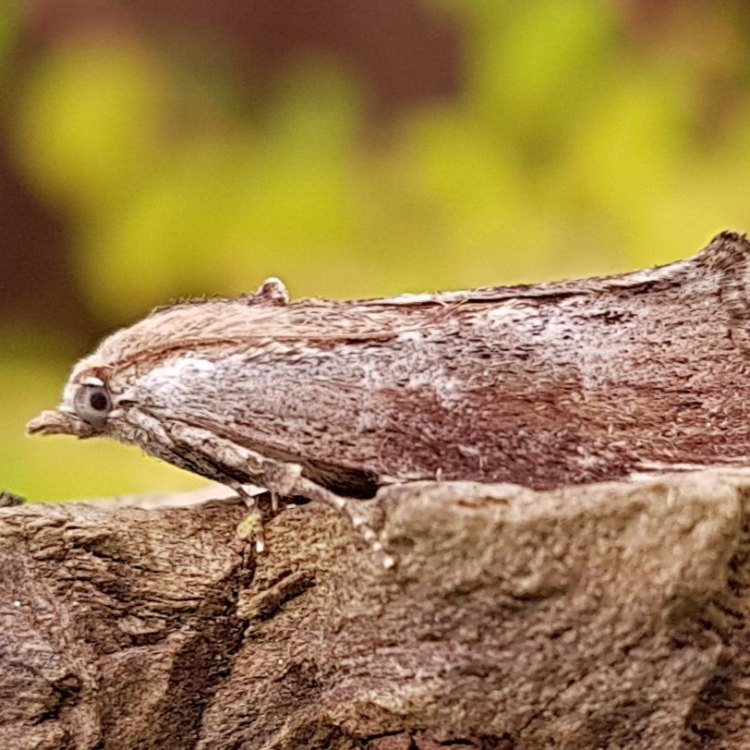
The Intriguing World of the Wax Moth
Disclaimer: The content provided is for informational purposes only. We cannot guarantee the accuracy of the information on this page 100%. All information provided here may change without prior notice.

